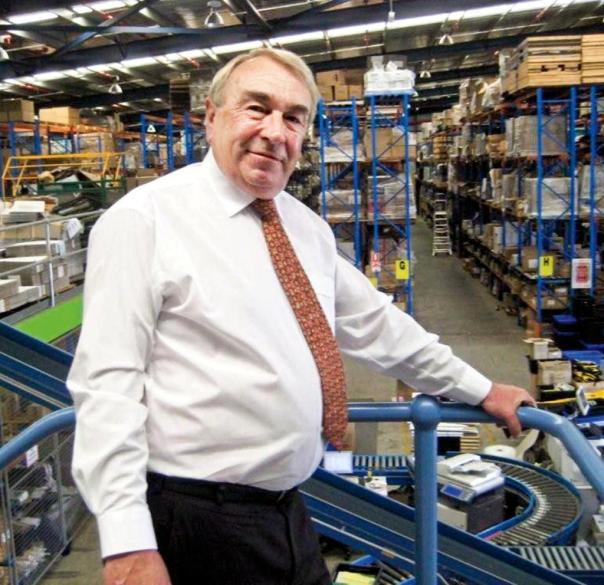
He sits atop a $45m company with a 100-plus workforce. He indirectly controls the destiny of a considerable proportion of the turnover of 70 to 80 Australian printers. He has no less than four separate sales teams covering a variety of markets and has just completed building a 30,000-pallet warehousing complex. He plans to move his head office there but not before he has developed the company’s current site into “a couple of office towers”.
In one of the most upbeat conversations for this feature recently, Phil Okill recalls the day he opened the doors of his fledgling print management enterprise and sold business cards to the electrician who came to connect the power.
It was 1988 and the economy was going through Prime Minister Paul Keating’s (in)famous “recession we had to have”. Okill, a 16-year veteran sales director of the venerable Moore Business Systems, had regularly travelled to the US, where someone standing between a multitude of manufacturers and their clients in the printing area was already an accepted concept.
Okill recognised the benefits of being able to provide unbiased support and direction for client companies’ printing needs and sourcing suppliers for them. He handed in his letter of resignation to Moore and established one of the early role models for print management consultancies in this country.
One of the first with software
It took six months before the software he had seen operating in the USA could be adapted to local conditions, during which time in his recollection, he went “from sales director at Moore to back-to-the-wall walking down the street into every door I could manage to open selling printing”.
Okill claims to have probably been one of the first companies, if not the first, to sell an independent print management programme supported by software which kept track of stock levels, usage trends and other forms of audit information not previously available to print suppliers.
The early days were not without their difficulties. No sooner had Keating’s economic convulsions settled into some semblance of normality than the print community expressed jealousies and antagonism. The sector may have then had little understanding of the print management concept, but it came to understand that the individual printer simply did not have the broad offering PMA was able to take to market.
“In those infancy days it was hard going,” Okill recalls. “They didn’t want to deal with a middleman; they were protective of their own accounts and they saw us as a threat. Whereas today we have printers waiting in line to make it onto our supplier panel. I regularly field half a dozen phone calls a week from applicants who want to be added to the 80 or so on our current list.”
And no wonder. Once a potential supplier’s credentials and facilities have been appraised and is put on a list waiting for another one, as Okill puts it, to “fall by the wayside”, a printer can look forward to an additional sales arm to his marketing armoury. In some cases, turnover generated for them by PMA is as high as 60% of their total; in others it is a more modest 10% to 20%.
The process is seamlessly electronic. Newly sourced jobs are entered into the system that identifies the printers on the list whose equipment, track record and experience qualifies them for that type of work. They have 24 hours to respond with a quote (if they’re busy, they may elect to quote high or not quote at all). The system proceeds to sort the quotes, converting one to a purchase order, entering the variables and attaching the file. The printer produces the job and delivers it to one of PMA’s warehousing centres where it is quality-checked, boxed, labelled and on-demand delivered to the customer.
Transparent system
Okill insists that the system is totally transparent, providing those suppliers that quoted with comprehensive analytical feedback.
He credits a request by a leading bank to regularize its print material warehousing problems to the broadbased extension of the company’s services into a fully fledged distribution organisation back in 1993. Not uncharacteristically, he recollects that when, at the time he was asked whether he could provide this service, he confirmed that he could.
“When the bank signed the contract, I went out and bought a warehouse,” he ruefully admits. Hence the name change from Print Management Services to PMA Solutions to reflect the broadening of the company’s offers.
Today, the company’s Norwest Park facility in Sydney’s Bible belt backyard of Baulkham Hills – its fifth headquarters in 21 years – stores 3,000 pallets. The recently built Erskine Park property in Sydney’s outer west will have the capacity to house 10 times that total. Once the current site receives Okill’s developer and builder ministrations to create a high-rise office complex, the entire operations of PMA will be consolidated into the Erskine Park facility.
Comment below to have your say on this story.
If you have a news story or tip-off, get in touch at editorial@sprinter.com.au.
Sign up to the Sprinter newsletter
